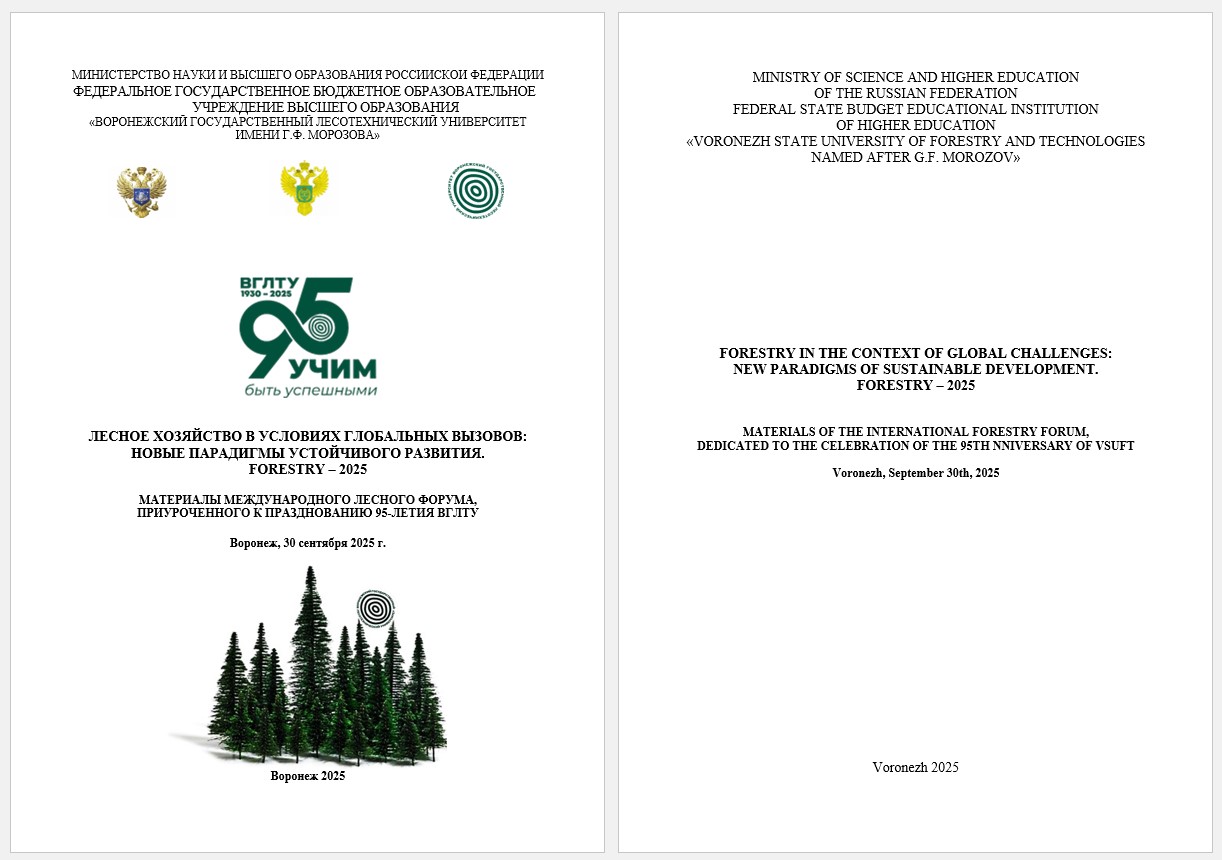Russian Federation
The article examines the features of self-pollination in certain species of the genus Crataegus L. under conditions of introduction (Arkhangelsk). Studies conducted in 2023 and 2024 showed that self-pollination results in few or no fruits being formed, and mainly produces empty seeds. Under free pollination, it was noted that the quality indicators are somewhat higher, but still remain low, which is characteristic of the genus Crataegus L.
hawthorn, Crataegus L., introduction, seeds, self-pollination, seed productivity
1. Aleksandrova Yu.V., Petrik V.V. Dobrokachestvennost' semyan boyaryshnikov, proizrastayuschih v dendrologicheskom sadu SAFU imeni M.V. Lomonosova // Landshaftnaya arhitektura v botanicheskih sadah i dendroparkah: materialy IX mezhdunarod. nauch. konf. (4-6 sentyabrya 2017). – Solovki, 2017. – S. 122–125.
2. Aleksandrova Yu.V., Babich N.A. Introdukciya vidov roda Crataegus L. v dendrologicheskom sadu imeni I.M. Stratonovicha // Materialy HI Mezhdunarodnoy nauchnoy konferencii Landshaftnaya arhitektura v botanicheskih sadah i dendroparkah. – 2019. – S. 85–89.
3. Vafin R.V., Putenihin V.P. Boyaryshniki. Introdukciya i biologicheskie osobennosti : monografiya. – M.: Nauka, 2003. – 224 s.
4. Krishtofovich A.N. Paleobotanika : uchebnik / 4-e izd. – L.: Gostoptehizdat, 1957. – 650 s.
5. Malahovec P. M., Tisova V. A. Rost i sezonnoe razvitie derev'ev i kustarnikov pri introdukcii v usloviyah Severa / P. M. Malahovec, V. A. Tisova // Lesnoy zhurnal. – 2000. – № 1. – S. 34–39.
6. Muhametova S.V. Otbor i sposoby razmnozheniya predstaviteley roda boyaryshnik (Crataegus L.) v usloviyah Respubliki Mariy El: dis. … kand. s.-h. nauk: 06.03.01 / Muhametova Svetlana Valer'evna. – Yoshkar-Ola, 2017. – 221 s.
7. Nekrasov V. I. Osnovy semenovedeniya drevesnyh rasteniy pri introdukcii / V. I. Nekrasov. – Moskva: Nauka, 1973. – 279 s.
8. Poletiko O.M. Boyaryshnik Crataegus L. // Derev'ya i kustarniki SSSR. – M.-L.: Izd-vo AN SSSR, 1954. – T. 3. – S. 514–577.
9. Solov'eva N.M., Kotelova N.V. Boyaryshnik – M.: Agropromizdat, 1986. – 72 s.
10. Cinovskis R.E. Boyaryshniki Pribaltiki – Riga: Izdatel'stvo «Zinatie», 1971. – 389 s.
11. Huang X., Liu S., Lou L. Phenylpropanoids from Crataegus pinnatifida and their chemotaxonomic importance // Biochemical Systematics and Ecology. – 2014. – № 54. – S. 208–212.
12. Li L., Gao X., Liu J. Hawthorn pectin: Extraction, function and utilization / L. Li, X. Gao, J. Liu et al. // Current Research in Food Science. – 2021. – T. 4. – S. 429–435.
13. Murray M. T. Crataegus oxyacantha (Hawthorn) / M. T. Murray // Textbook of Natural Medicine (Fifth Edition). – 2020. – S. 544–547.e1.
14. Ozcelik F., Akan E., Kinik O. Use of Cornelian cherry, hawthorn, red plum, roseship and pomegranate juices in the production of water kefir beverages / F. Ozcelik, E. Akan, O. Kinik // Food Bioscience. – 2021. – T. 42, August. – 101219.
15. Peng Y., Lou L., Liu S. Antioxidant and anti-inflammatory neolignans from the seeds of hawthorn / Y. Peng, L. Lou, S. Liu et al. // Bioorganic & Medicinal Chemistry Letters. – 2016. – № 26. – S. 5501–5506.
16. Sagaradze V. A., Babaeva E. Yu., Ufimov R. A. Study of the variability of rutin, vitexin, hyperoside, quercetin in «Crataegi forum cum flore» of hawthorn (Crataegus L.) species from Russian flora / V. A. Sagaradze, E. Yu. Babaeva, R. A. Ufimov et al. // Journal of Applied Research on Medicinal and Aromatic Plants. – 2019. – T. 15. – 100217.
17. Strelets V. D., Balabanov V. I., Vinogradova O. A. Prospects of hawthorn introduction into industrial fruit culture / V. D. Strelets, V. I. Balabanov, O. A. Vinogradova // Science-almanac. – 2015. – № 2 (2). – S. 13–18.





